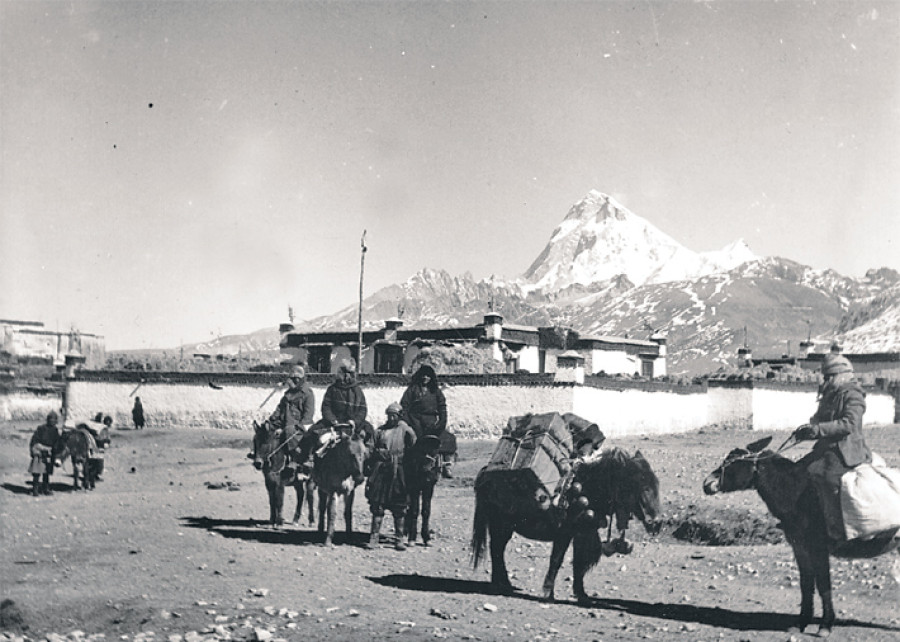Miscellaneous
Traders in the Land of Snows
The old Tibet trade is a celebrated period in Nepal’s history when commercial and cultural exchanges across the high Himalaya reached exalted heights. For over a thousand years, generations of merchants of Kathmandu have journeyed across the frozen passes in great mule caravans to conduct business in Lhasa and other trade centres in the Land of Snows.
The old Tibet trade is a celebrated period in Nepal’s history when commercial and cultural exchanges across the high Himalaya reached exalted heights. For over a thousand years, generations of merchants of Kathmandu have journeyed across the frozen passes in great mule caravans to conduct business in Lhasa and other trade centres in the Land of Snows. They linked up with traders from exotic capitals on the Silk Road who arrived in mule, camel and yak trains, and traded factory-made merchandise for wool and skins which they sent to India.
The Nepali merchants maintained business houses in Tibet and India and handled the flow of goods going in both directions. Pack mules transported the merchandise up and down the trade route. The merchants lived far away from home and family for years at a time, and their adventurous lives and the rigours of the journey have inspired poets to compose soulful ballads. And there were many who never came back, their lives cut short by altitude sickness or extreme cold on the Tibetan plateau, like my grandfather who died on his horse while returning from Lhasa in 1935. My father naturally followed his predecessors to the ancestral shop in Lhasa. It was located on the Barkhor, the main bazaar street and pilgrim route that goes around the Jokhang, the holiest temple in the city.
Very few of the old generation of merchants remain. They will tell you about their travels to Lhasa on horseback, retracing the footsteps of their forefathers in the snow. They will relate stories about encounters with bandits on the lonely trade route, where you might not meet another soul for days. They will tell you about stepping across the glasslike surface of lakes frozen over, and getting caught in a blizzard on the vast plains. And then there are the lighter moments, picnicking in the parks outside Lhasa in the summer, making momos and playing endless sessions of mahjong.
The old routes from Kathmandu to Lhasa went over the Himalaya at the Kyirong and Kuti passes, and continued eastward along the northern flank of the great peaks. In the 1920s, a new trail was opened through Sikkim which lies to the east of Nepal. Traders from Kathmandu walked, trained and motored to the staging points of Gangtok and Kalimpong in India, from where they embarked on a three-week trek by mule caravan to Lhasa. Crossing the Himalaya at the Sikkim border, the trade route continued over windblown stony plains that stretched as far as the eye could see. The travellers plodded over mountain trails past glaciers creeping down from the summit as they pressed northward, and crossed the wide Brahmaputra River by ferry before starting the final stretch of the journey to Lhasa.











My father was descended from a long line of merchants, and his generation was the last in our family to make the trip to Tibet. A chapter in the ancient trade came to a finish in the mid-1960s after the frontiers were closed, and a way of life passed into folklore as the traders returned home for the last time. The accompanying pictures, spanning the 1940s and 1950s, show Nepali traders at work and leisure in Lhasa. The photographs provide a glimpse into a bygone era, and the life and times of the men who made a profound influence on the economy and culture on either side of the Himalaya.




 17.12°C Kathmandu
17.12°C Kathmandu









